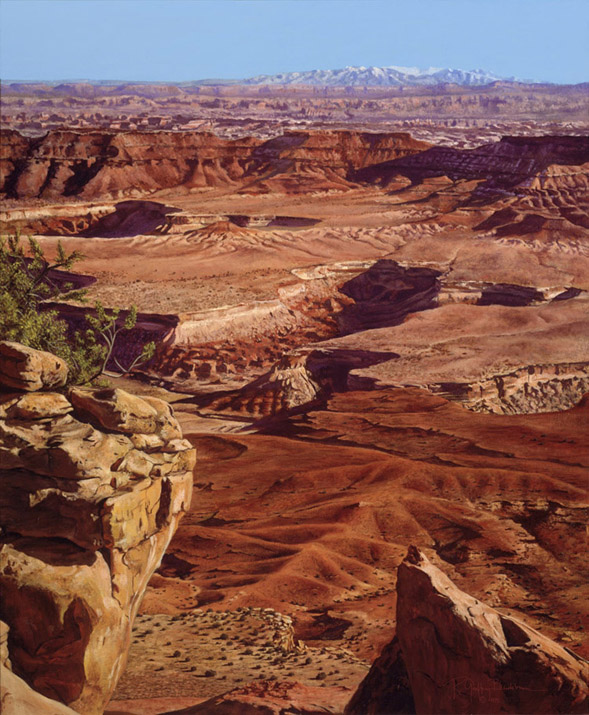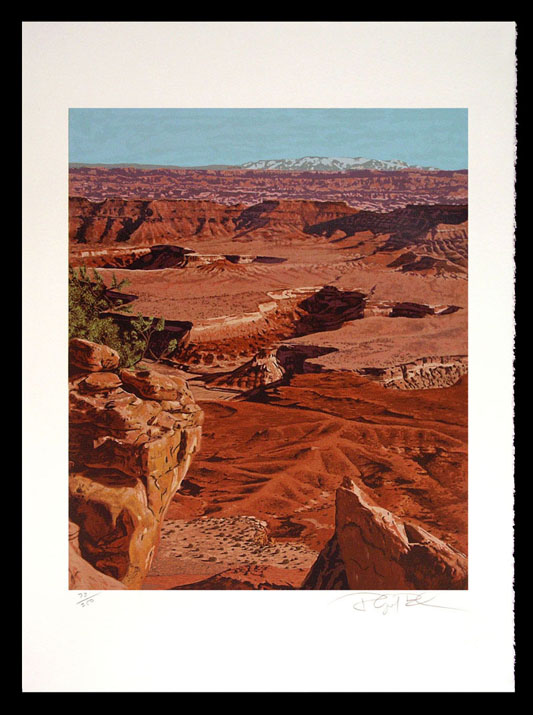| Description | Size | Price |
| Oil on Linen |
24 x 30 in (61 x 76.2 cm) | Sold |
| Serigraph Print | 22 x 18 in (55.9 x 45.7 cm) (image) | inquire |
| Serigraph (Artist's Proof) | 24 x 36 in (61 x 91.4 cm) | inquire |
Custom sizes and formats available contact: rgeoffrey@rgeoffrey.com
"Desert Canyons" Painted in 1974
"This painting was the first in a series of desert landscapes I created during a period of personal involvement with mineral exploration and mining in Southeastern Utah, near Moab. "Desert Canyons" is a composite of geological formations and vistas in this area. The limited edition serigraph entitled "Desert Canyons" is a 28-color hand done silk screen reproduction (serigraph) of the original oil painting of the same name (shown above).
"Desert Canyons" began as a much different painting than is
now visible. In fact, "Desert Canyons" evolved from an
earlier work depicting five armed men, in "hot pursuit,"
riding through a forest. This original painting, entitled
"The Posse," was completed in 1972 and displayed at the
Jailhouse Gallery in Taos, New Mexico. After a few months I
decided that the posse would look more natural riding
through a desert than through a forest, so I asked the
gallery to return the painting so I could change the
background. One by one members of the Posse began
disappearing under a coat of paint until, at last, there was
only the Sheriff riding along the edge of a cliff, rifle in
hand. Finally, he too was painted over and thus the
painting, "Desert Canyons" was created. (In just the right
light, the posse was still visible under the desert, buried
for all time like the cowboys of the old west).
This
final version of the "Desert Canyons" oil painting was completed in 1974 and
was part of the Robert Norman collection. Mr. Norman is a
geologist and General Manager of the Minerals Exploration
Division of Buttes Gas and Oil Co., Moab, Utah.
Interestingly, this work and the paintings of this period
that followed are so geologically accurate that all but one
are (or were originally) owned by geologists or mining
companies. The Desert Canyons painting was destroyed
in a fire at Robert Norman's home.
The importance of this work is that it
began the Artist's "Red Rock Landscape Period." The original
painting was destroyed in a fire many years ago. Only the
serigraphs remain."
R. Geoffrey Blackburn



 Blackburn Studios
Blackburn Studios